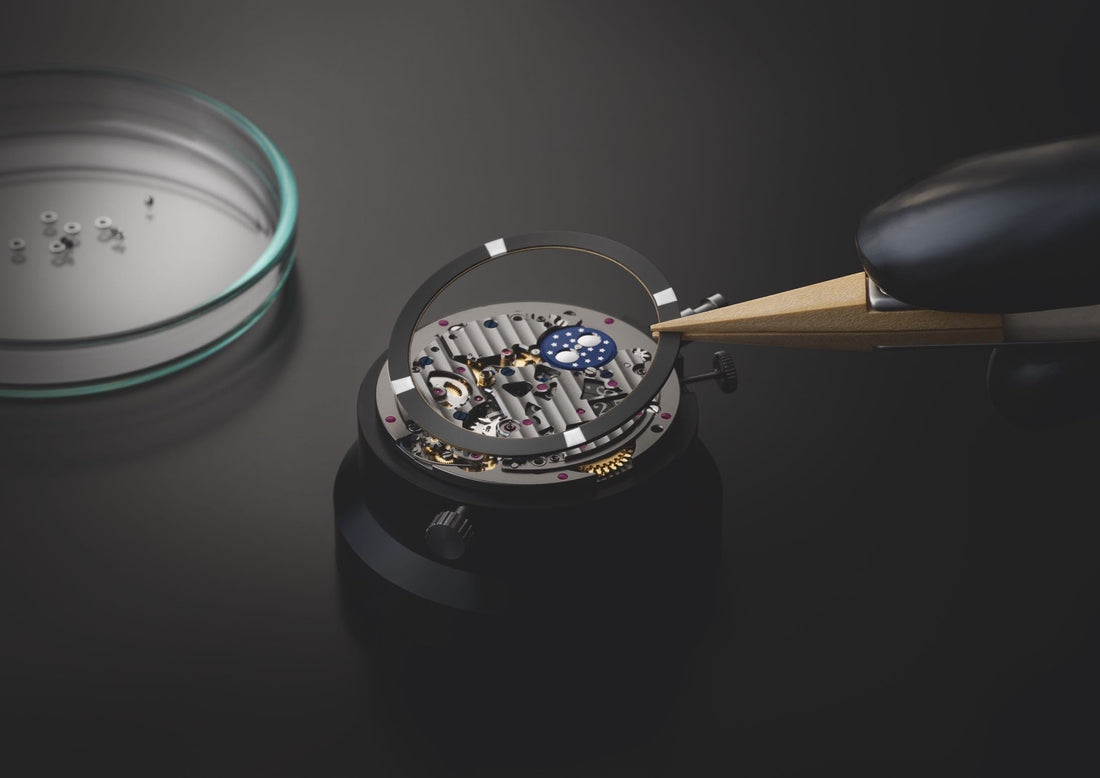A watch has many parts, but the most important of them by far is its movement. A movement is composed of many pieces (hundreds in some cases) and it is the driving force behind your watch, moving the hands and keeping time accurately day in, day out. While watch technology has been eclipsed by smartphones and other digital devices in recent years, it’s still pretty fascinating when you get down to it – especially considering that people were making accurate watches long before they could design them on computers. Not all movements, however, are alike.
This guide will help you differentiate between the most common kinds, and appreciate the merits of each.
Mechanical
A mechanical movement, also called a “manual-wind” or “hand-winding” movement, is the oldest kind of watch movement still in use, and it’s usually found in vintage reboots or very high-end watches. Like automatic movements, a mechanical watch is powered by a mainspring, a thin coil of metal which unwinds at a steady rate, and delivers its store of power to the other components that make your watch tick. Unlike an automatic watch, a mechanical watch requires regular winding, but fans of these movements often say they enjoy the ritual of winding a watch everyday as it allows them to interact with it more directly than automatic or quartz-powered watches. Also, as with automatic watches, mechanical ones have seconds hands that “sweep” rather than ticking.
Automatic
Most luxury watches feature automatic movements, which are mechanical movements that wind themselves automatically with the movement of your body. Most automatic watches are wound via a rotor, a semi-circular piece of metal often visible through a watch’s display case back. Invented in the 1700s and originally used in pocket watches, this remarkable innovation benefits from being worn on the wrist by collecting and storing energy any time you move your arm. Automatic movements can also store a finite amount of energy in their mainsprings which determines how long they’ll run between wears. This is called the “power reserve,” and having one of 60 hours or more comes in especially handy if you take off your watch for the weekend by saving you the trouble of having to reset the date and time on Monday morning.
Quartz
Among the biggest innovations in the watch industry was the introduction of quartz movements in the 1970s, a disruption which almost destroyed the traditional watchmaking industry. The technology works by using a battery to send an electrical charge through a crystal, which vibrates at a specific frequency. Those vibrations are then used to move a gear train connected to the watch’s hands. There’s much more to it than that, but more importantly than how it works is what it offers. Not only are quartz watches much cheaper to produce, requiring few moving parts and less hand-assembly, they are also far more accurate than mechanical or automatic ones. Aside from requiring a new battery every few years (unless it’s a solar-powered watch, of course) quartz watches will run pretty much forever without missing a beat. And because they have fewer moving parts, they’re also much more robust than their mechanical and automatic siblings.
Explore a Watch DNA here
Featured watch GLASHÜTTE ORIGINAL PANOMATIC 19210010362
Read more articles from Jeremy Freed








